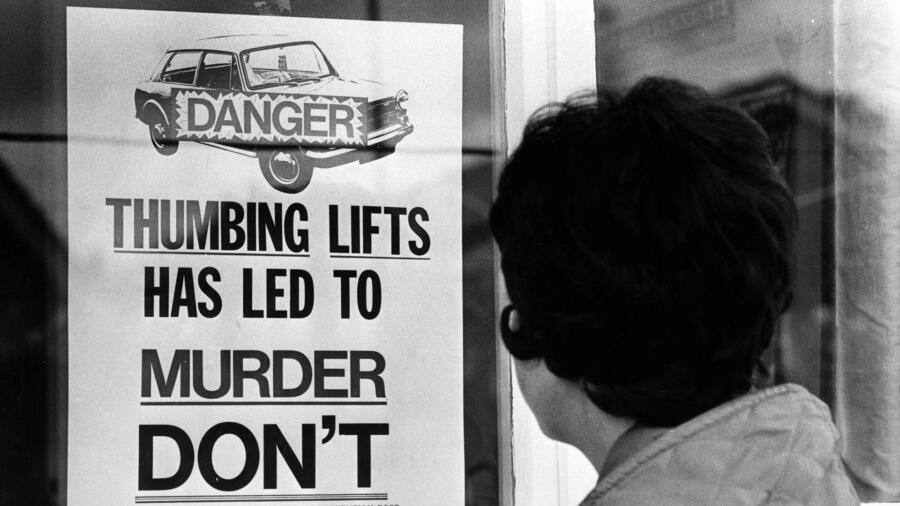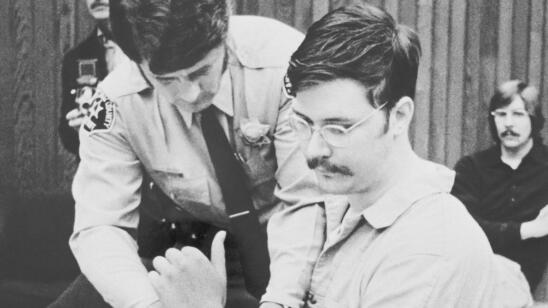From Ted Bundy to Jeffrey Dahmer to the Green River Killer, one thing the United States has in spades is serial killers. Not only is the U.S. home to an estimated 2,000 active serial killers, but according to recent research from Dr. Mike Aamodt, forensic psychology professor at Radford University, there are more serial killers here than anywhere else in the world.
A&E True Crime spoke with Aamodt about why female serial killers have declined over the years, why there was a big jump in serial killings between the 1960s and 1980s and his most surprising finding.
Tell us a little about your research on serial killers.
We found over 5,000 people so far [around the world] who were confirmed serial killers and who committed two or more homicides on two or more separate occasions. We’ve looked at them in terms of race, gender, methods and the country where they committed their murders.
In your research, you found that the U.S. produces the most serial killers worldwide. Why is that?
My theory is the U.S. really doesn’t have a disproportionate number of serial killers. Instead, it’s just much easier to find serial killers here than it is in other countries.
First, law enforcement has to discover the murders and link them back to the same killer. That means you need competent law-enforcement agencies, which the U.S. has. The second part of being able to track serial killers is once the killer is identified, it has to be announced by law enforcement and made available in prison records. The information has to be available to the public.
In the United States, we have much more open records than other countries do. If the U.S. had a higher murder rate than the rest of the world, I would be more likely to believe that we have more serial killers, too. But compared to other countries in terms of the murder rate we’re right around the middle.
You also found that women are killing less. In the 1900s, almost 38 percent of serial killers were women, compared to only seven percent today. Why?
You have to look at the reasons why men and women typically kill. Women are more likely to kill spouses and family members to get insurance or for financial gain. But changes in technology have reduced the opportunity for women to be serial killers as opposed to men.
For instance, before computers, if you were a woman who was killing multiple husbands for insurance money, you could change states between murders or choose different insurance companies. Today, after one murder, insurance companies will start to get suspicious. Women may still have a financial motivation for killing but there’s reduced opportunity.
Are male serial killers also on the decline in the U.S.?
Yes. Longer sentences and more restrictions on parole are big reasons for that, which have been happening since the 1980s. The vast majority of killers have been convicted of other crimes prior to killing, and if those sentences are longer they’re less likely to be out on the street or back out to kill again.
Another reason is it’s much more difficult to get victims now. If you look at the victim type from the ’70s and ’80s, you have people who had been hitchhiking or people who picked up hitchhikers. And kids [who] would walk to the store or to school. There’s been a change in behavior. You don’t hitchhike, you don’t pick people up, there are fewer ‘free-range’ children. There are just fewer opportunities for serial killers to come across victims.
According to your research, serial killers are on the decline in the U.S. now, but there was a huge jump between 1960 and the 1980s. Why?
Part of that, I think, was the interstate system that was being expanded at the time—it made it much easier for serial killers to be mobile. But you also have to remember that the term ‘serial killer’ wasn’t even coined until the 1970s.
As researchers, when you go back and search for serial killers, you’re not going to find a newspaper in the 1950s using that term. You have to search for terms like ‘convicted of three murders’ or ‘shot three people’ and then determine whether it was a mass murder or a serial killing. It could be that there were just as many serial killers in the ’50s as there were in the ’70s, but because we didn’t have that term it’s just harder to discover them.
What’s the most surprising thing you’ve learned about serial killers?
There are so many different types of serial killers. There really isn’t a one-size-fits-all profile. When I started doing this work I didn’t know a lot about serial murder, and I thought, like [most] everyone else, that serial killers all killed the same way, had the same motives and there was one profile. But that’s not the case.
When you really look at serial killers, you might find someone who killed three to four people over a 30-year period, or you might find a gang member who’s killed five people, and they fit the definition of a serial murderer but they don’t kill in a series. It’s very different than what we think of as a typical serial killer—someone who is stalking prostitutes and killing once a month.
If we use the term ‘multiple-event killer,’ we can then find subtypes of multiple-event murderers and then study things like motivations, because the method and the motivations are all so different.
More:
The Blue-Collar Jobs of Serial Killers
‘Good Luck Sleeping Tonight’: Serial Killers Plague Almost Cities
Is There a Serial Killer in Chicago Right Now, Strangling Women and Burning Their Bodies?



